Visit the Most Remarkable French Revolution Sites in Paris with this Self-Guided Tour
This self-guided French Revolution Walking Tour takes you to the most remarkable French Revolution sites in Paris. If you’re in a hurry, jump to the itinerary overview here.
Learn about Paris during the French Revolution at your own pace with this Paris French Revolution Tour, which takes a full day.
This article also suggests a day trip to Versailles as a prelude to your French Revolution tour, and includes my top tips to make the most of your day in Versailles.
Finally, this article is completed with other French Revolution sites in Paris, which are also important but too eccentric or difficult to include in the French Revolution Walking Tour.
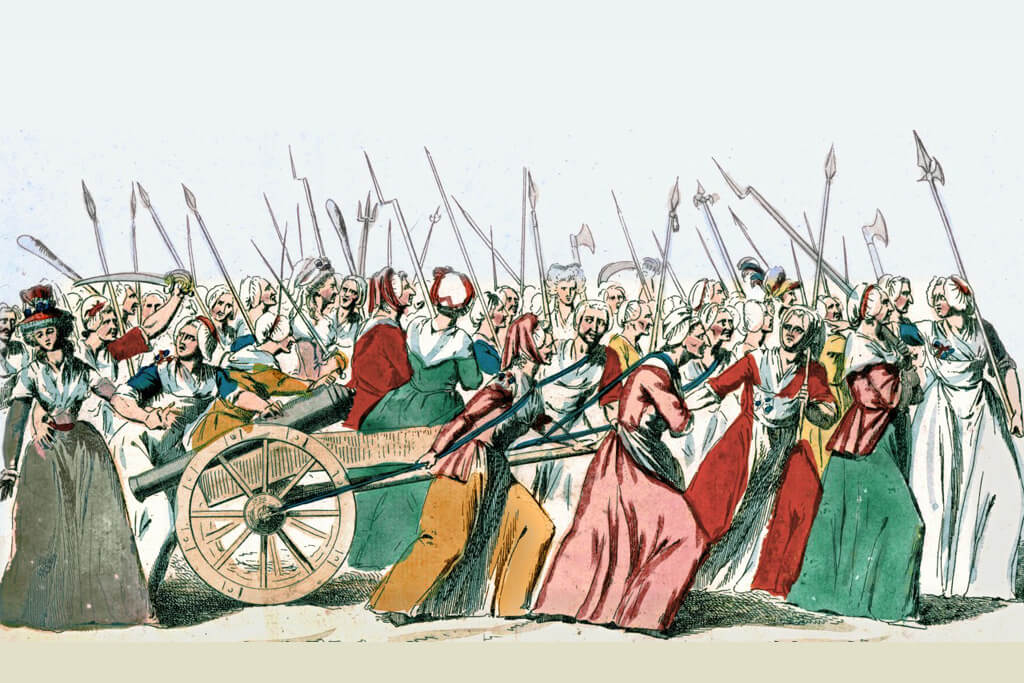
Table of Contents:
Paris During the French Revolution
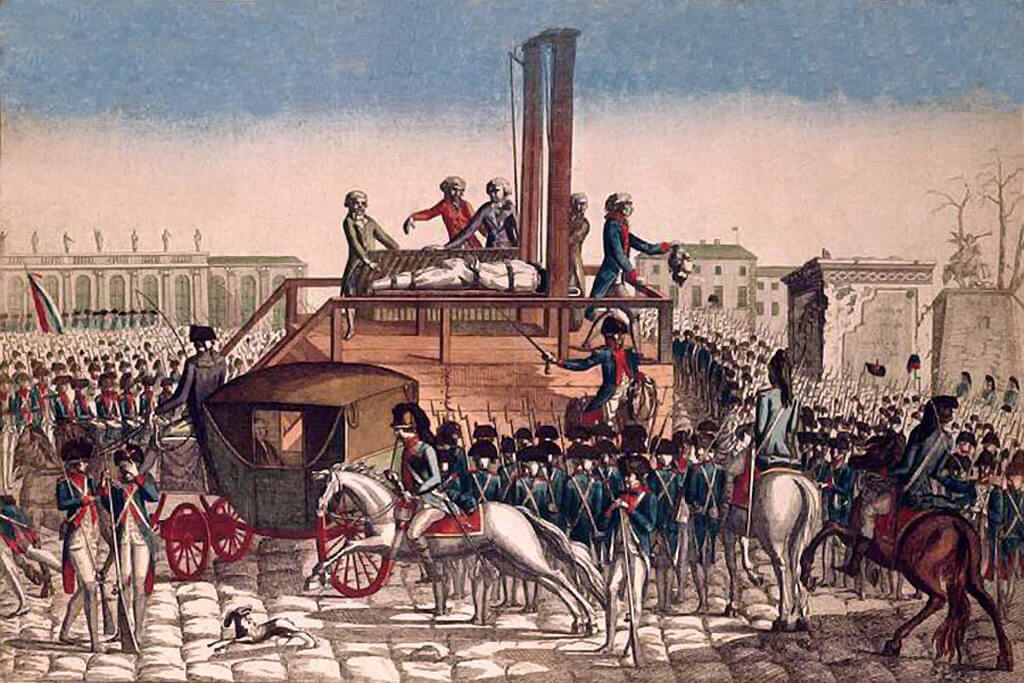
The French Revolution is a key chapter in the history of France. During the French Revolution, the people overthrew the monarchy and seized control of the government, transforming France’s social and political structure.
The French Revolution also brought new ideals to Europe, including liberty and freedom for commoners, as well as the abolition of slavery and the pursuit of women’s rights.
The French Revolution lasted from 1789 to 1799. It began on the 14th of July when revolutionaries stormed the Bastille prison and ended in 1799 when a general named Napoléon overthrew the revolutionary government and established the French Consulate with himself as its leader.
Although the French Revolution ended with the rise of Napoléon, the revolutionary ideas continued to influence Europe and helped shape many of Europe’s modern-day governments.
Today, curious wanderers can still see some traces of the French Revolution in Paris. Follow this French Revolution walking tour in Paris to appreciate the major landmarks during this tumultuous period in French history!
French Revolution Walking Tour Map
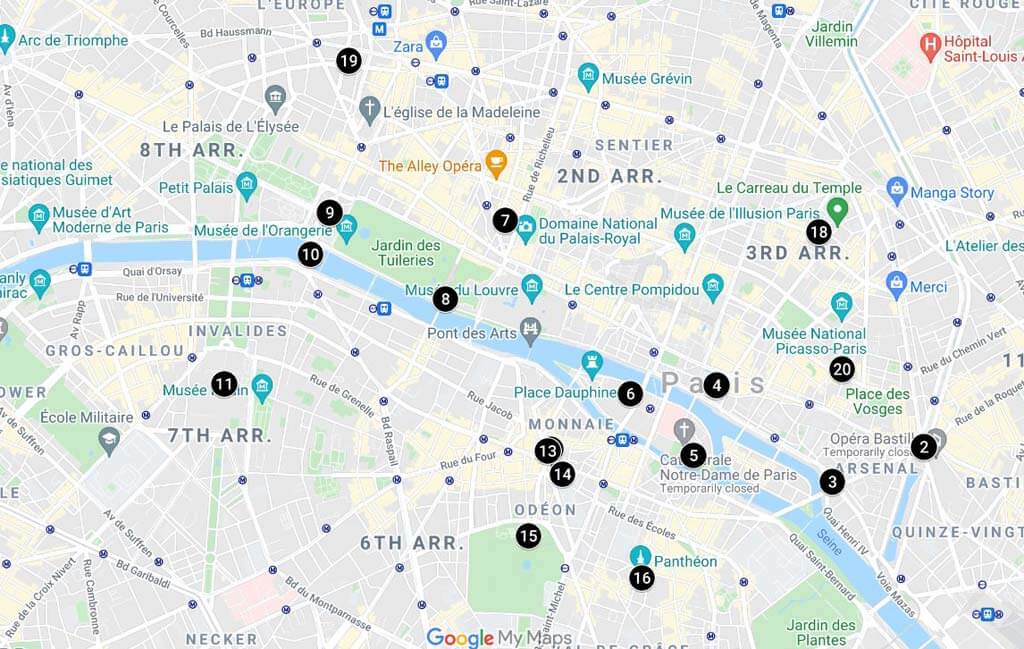
Click here to view this French Revolution walking tour itinerary on Google
1. Start with a Day Trip to Versailles to Get in the Mood
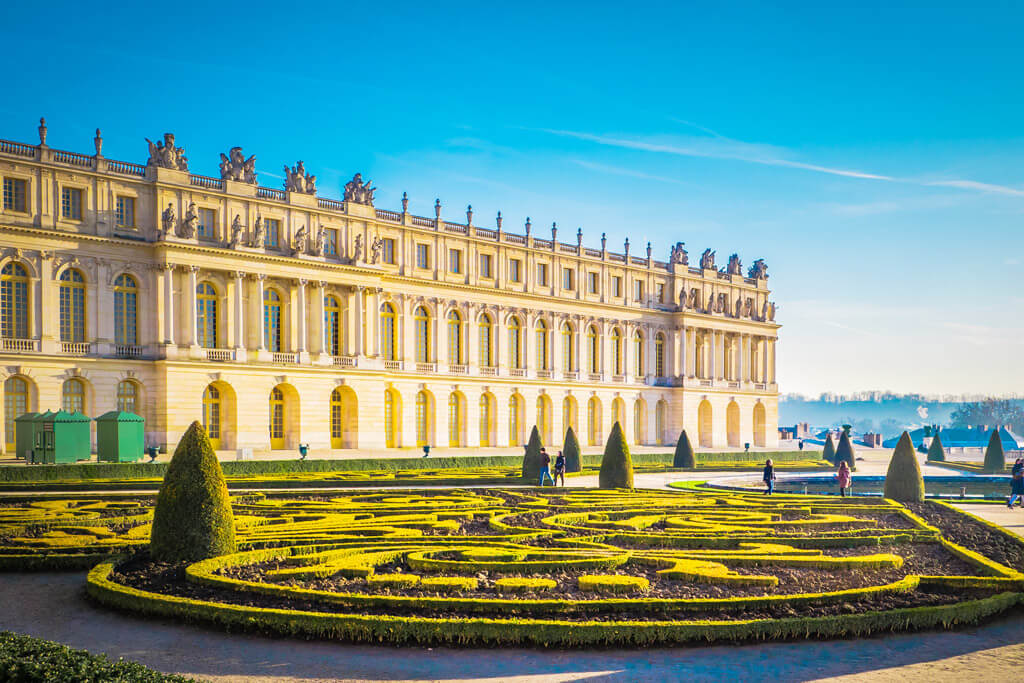
If you have a spare day in the French capital, consider a day trip to Versailles, the symbol of the Monarchy and the Old Regime. The Royal Palace still breathes royalty and opulence, and it’s easy to recognize the social and economic tensions that led to the Revolution.
At that time, Louis XVI was the King of France, and he and his court lived in the Château of Versailles. On 1 October, a sumptuous feast for 210 guests was held in the Royal Opera House of Versailles. In the tense climate outside the doors, many considered such strident demonstrations the ultimate act of provocation by the monarchy.
On 5 October, a large crowd, mainly composed of women, marched on the Palace. The mob gathered in the Marble Courtyard and demanded a royal appearance. King Louis XVI promised to give them bread and to come to Paris. That’s when the King, his family, and a Royal cortege left Versailles; their departure was final.
Read these Versailles skip-the-line tips before you visit the Château. In addition to the Versailles Estate, I recommend visiting the Salle du Jeu de Paume, one of the most important sites of the French Revolution. You can read more about this site in my article about Versailles.
No time for Versailles? Watch any of these movies about Marie-Antoinette to get an idea of the sumptuous life in Versailles.
French Revolution Tour – Paris Itinerary
French Revolution Walking Tour Paris Itinerary Overview:
- Place de la Bastille
- Square Henri Galli
- Hôtel de Ville
- Ile de la Cité
- Louvre Palace
- Concorde
- Hôtel des Invalides
- Odéon
- Luxembourg Gardens
- The Panthéon
- Picpus Cemetery
2. Place de la Bastille
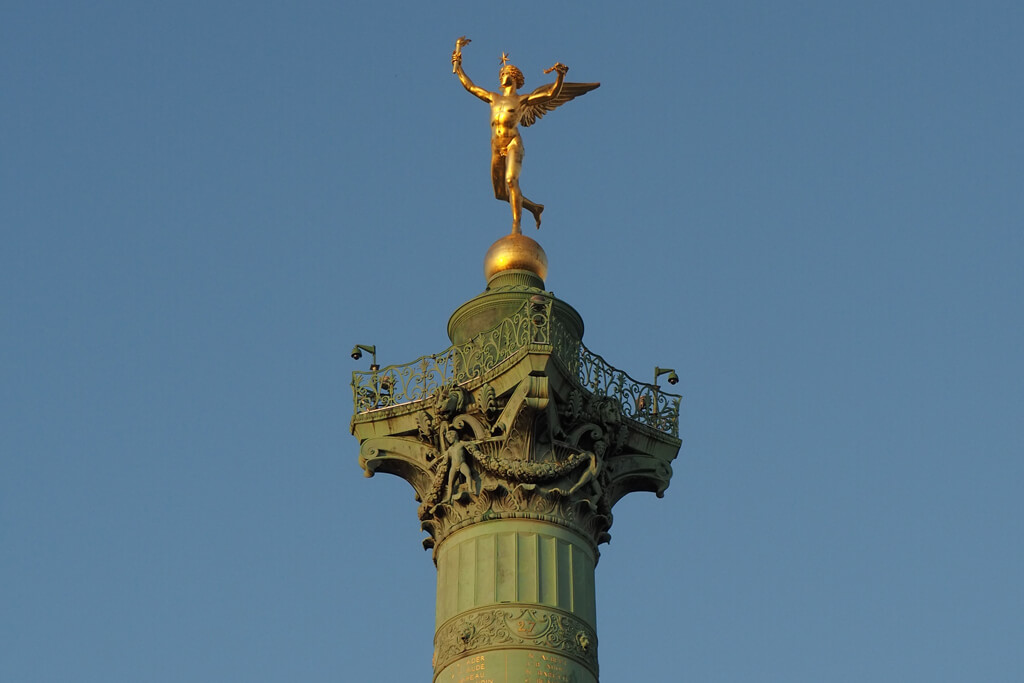
This Paris French Revolution tour starts at Place de la Bastille (Paris 11), one of the main French Revolution sites in Paris. This square commemorates those revolutionary days and celebrates the victory of democracy over tyranny.
Bastille Square was, until the 18th century, the location of the infamous fortress, which was turned into a prison. On 14 July 1789, the Bastille Prison was stormed by a crowd of angry and armed people, and the prison governor had to surrender and open the gates. This direct confrontation between civilians and the Old Regime marked the outset of the French Revolution.
The Bastille Prison was demolished that same year, and little has remained of the old building. Special pavement stones and plates on Boulevard Henri IV and Rue Saint-Antoine mark the original perimeter of the prison fortress. Also, on the facade of #3, you can see the plan of the fortress before it was demolished.
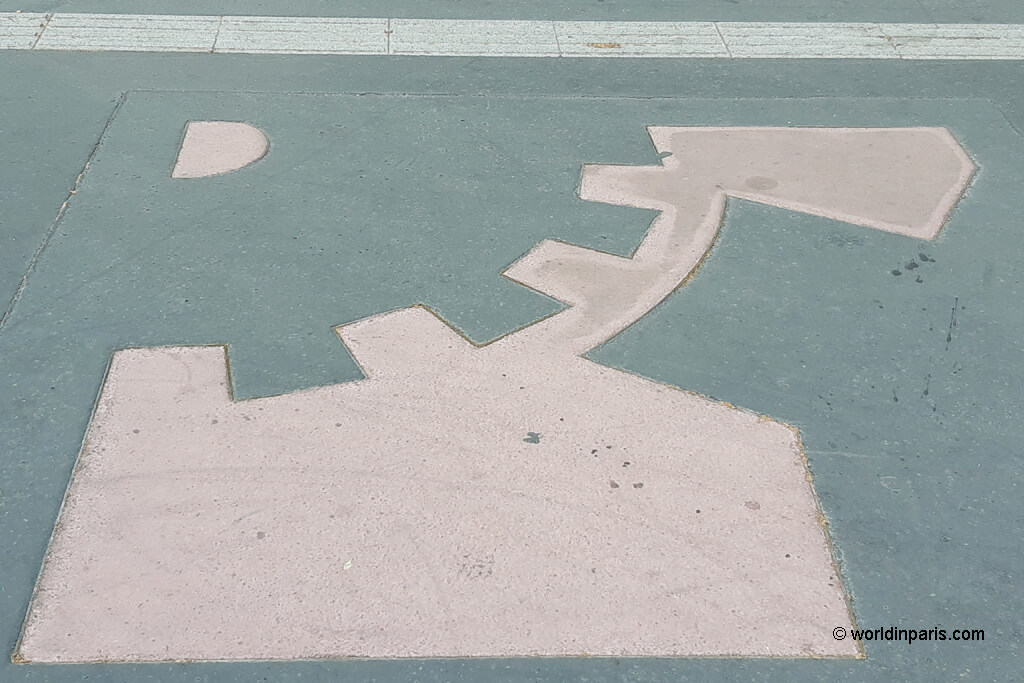
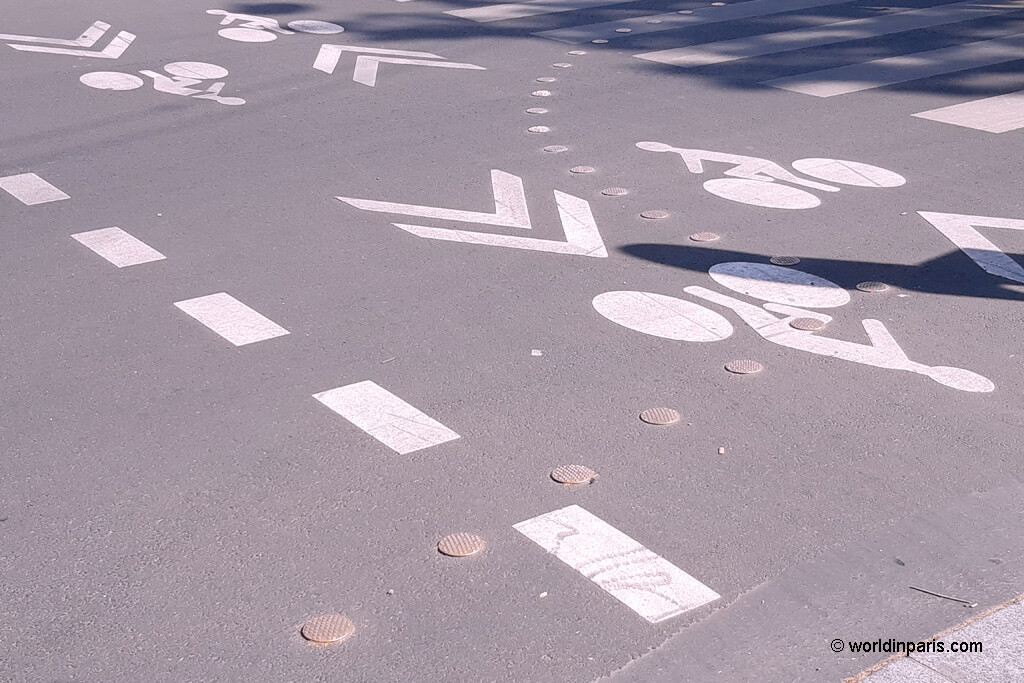
Today, Bastille Square is a lively place with many bar-terraces and the Opéra de la Bastille. The imposing July Column that dominates the square commemorates the revolution of 1830 when King Louis-Philippe replaced King Charles X.
3. Square Henri Galli
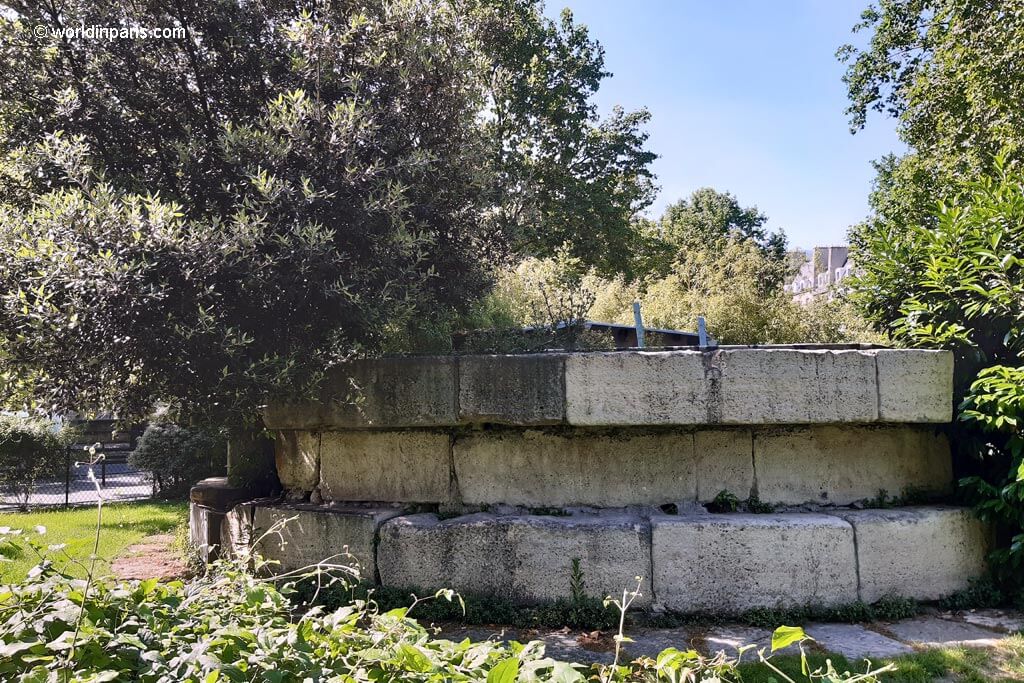
In 1899, during the excavation works for the Parisian metro, a small section of the Bastille Prison was uncovered on platform number 5 of the Bastille metro station.
During these excavations, part of the Liberté Tower was also found. The tower was dismantled and moved to Square Henri Galli, in Paris 4, where you can still see it today.
4. Hôtel de Ville
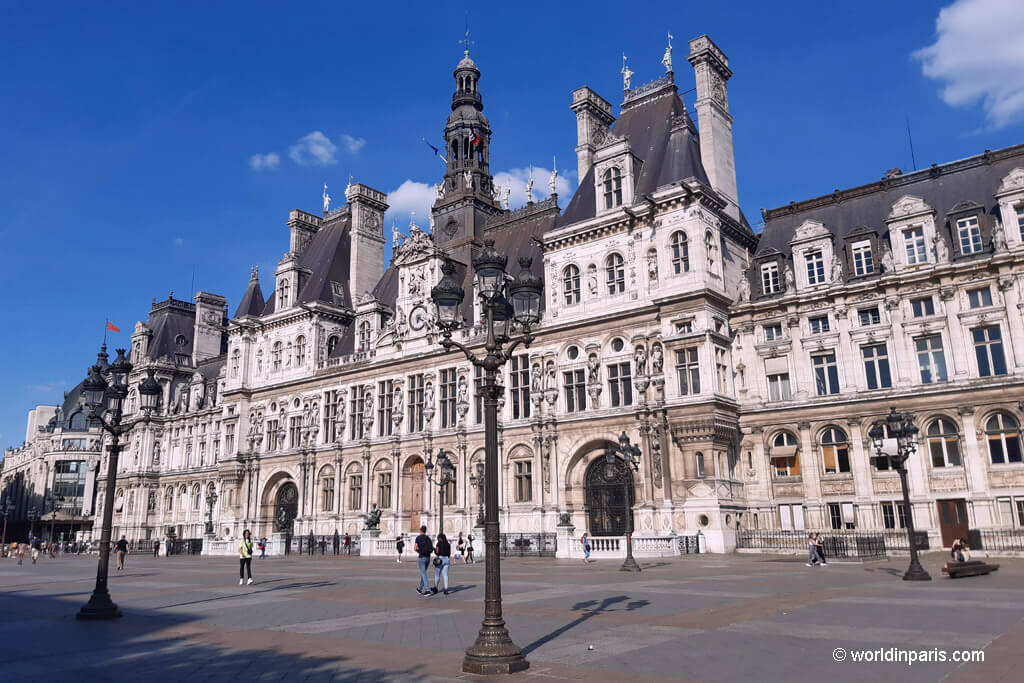
The next stop of this French Revolution tour is Paris’ City Hall. Hôtel de Ville is the largest City Hall building in Europe and one of the most prominent landmarks in Paris.
Until the 16th century, the sessions of the Paris municipal council were held at the home of the city mayor. It was King François I who ordered the building of a dedicated City Hall in Renaissance style.
It was in the Hôtel de Ville where the Bastille’s governor was dragged and stabbed to death. Later, his decapitated head was paraded around the square on a pike.
During the revolutionary days, the Hôtel de Ville served as headquarters for the French Revolution, accommodating Robespierre and his supporters. It was here that Robespierre was arrested at the end of this period.
Hôtel de Ville can’t be visited except during rare occasions. But on the parvis, there’s always something going on, like protests, concerts, and also one of the most beautiful Christmas markets in Paris.
5. Notre Dame Cathedral
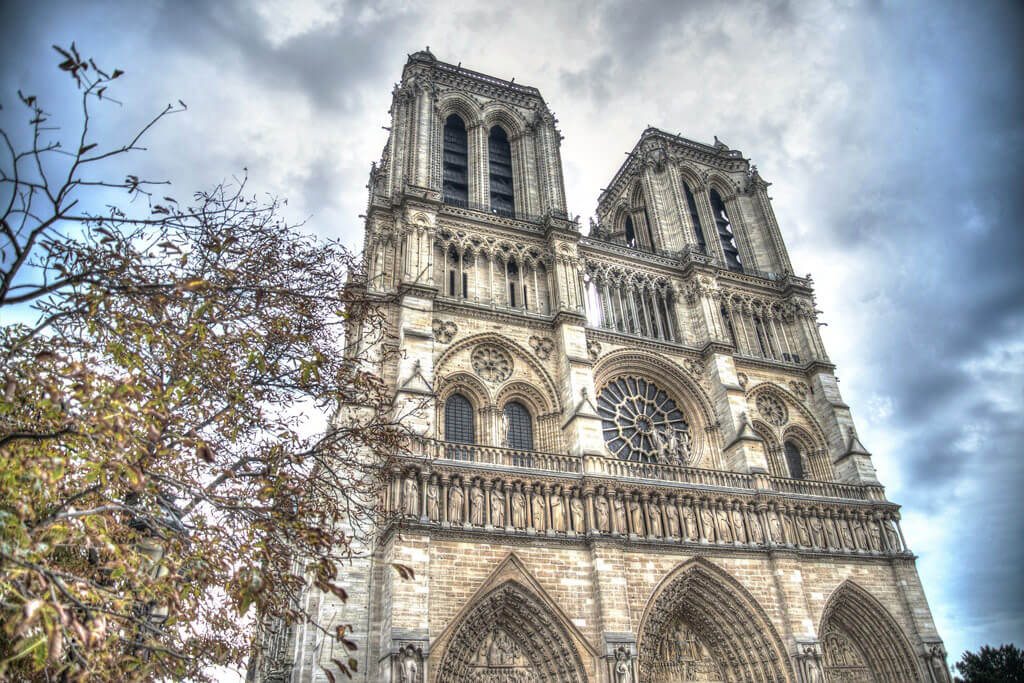
During the French Revolution, Notre Dame Cathedral suffered sacking, pillaging, and destruction.
Before the Revolution, the west facade of Notre-Dame de Paris was adorned with the 28 Kings of Judea statues, dating back to 1230. Unfortunately, the heads of the original figures were decapitated during the revolutionary days. The mob, thinking they were French Kings, tied ropes around the statues, pulled them down, and guillotined them in the square in front of the Cathedral.
With the rise of the Enlightenment ideals and the dechristianization of the French population, Notre Dame officially became the “Temple of Reason” and was then used as a wine storehouse.
In the early 19th century, things calmed down, and the statues got new heads. Two hundred years later, twenty-one of these heads were discovered on a construction site. Today, these original heads are displayed in the Cluny Museum.
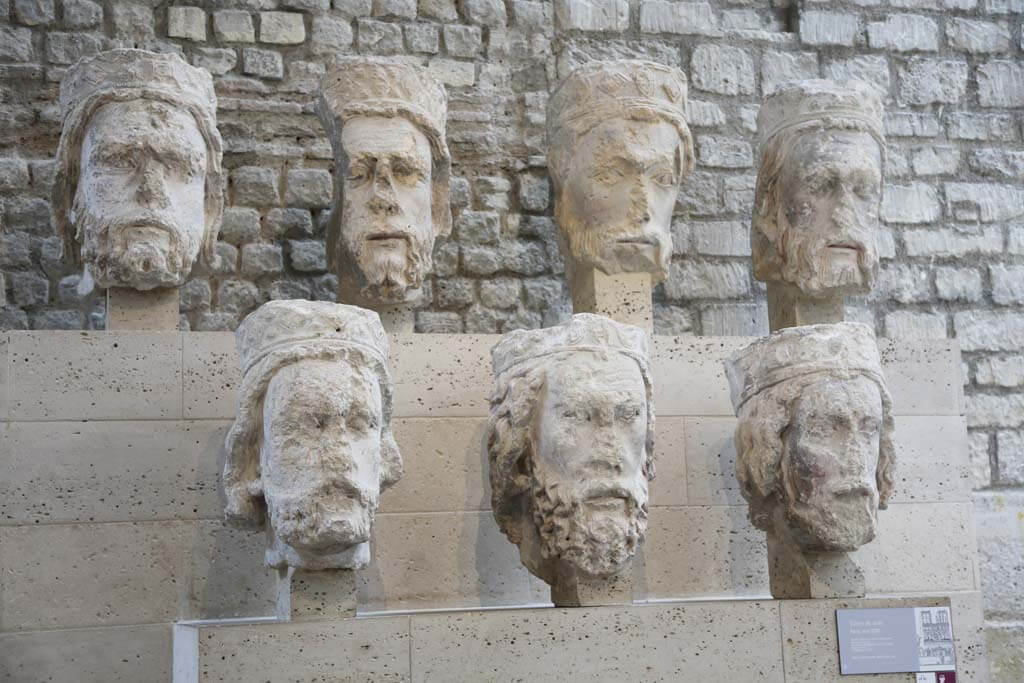
Here are all the ways to visit Notre Dame Cathedral inside. Before leaving, admire the West facade with the Kings of Judea and the beautiful rose window with the statue of the Virgin Mary.
Notre Dame Opening Hours: Monday to Friday 7:50 a.m. to 7 p.m.; Weekends from 8:15 a.m. to 7:30 p.m.
6. Conciergerie
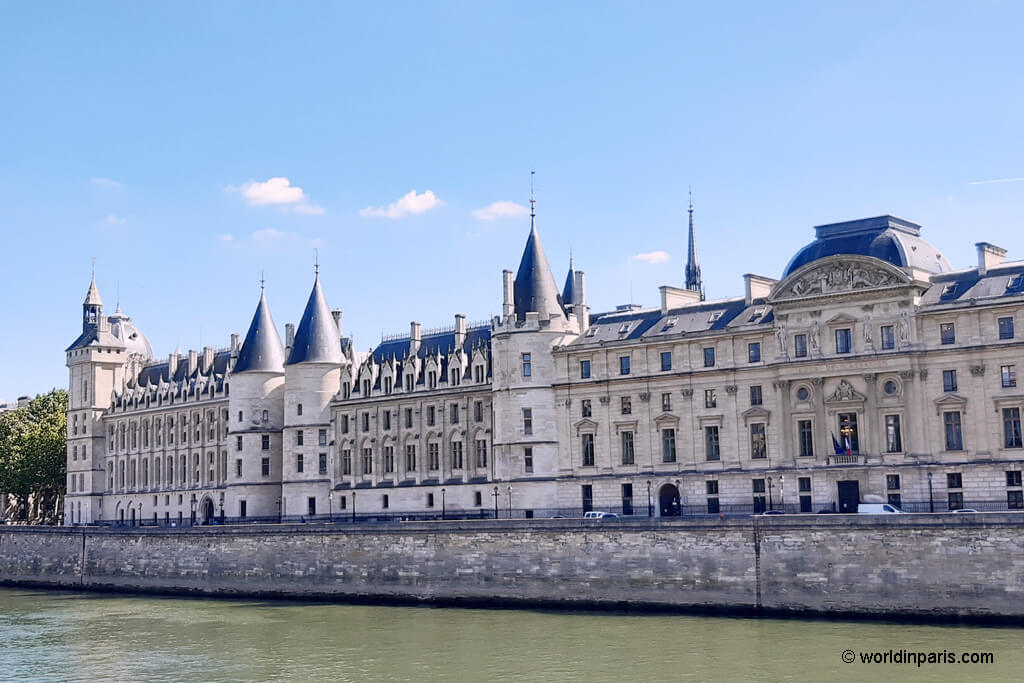
The Conciergerie was the official residence of the French Kings until the end of the 14th century, when they settled in the Louvre Palace and Château de Vincennes. Then, the building became part of a complex called Palais de Justice.
During the French Revolution, this 14th-century palace was turned into a prison. More than 2,600 prisoners were tried here, including Queen Marie-Antoinette. From the Conciergerie, she was taken on a cart to the guillotine in nearby Place de la Concorde.
The Conciergerie is a fascinating Gothic building to visit. The Salle des Gardes (Guards Room) and the immense Salle des Gens d’Armes (Hall of the Soldiers), built under King Philippe Le Bel, are beautiful remains from the days of the medieval palace.
The Palace turned prison also contains fascinating rooms and objects, like the Queen’s 3.3 by 1.8 meters cell and the bell that announced the arrival of her tumbrel in the May Courtyard. You can retrace her final journey to the guillotine by exiting the Conciergerie, crossing the Pont Neuf, and, after a few blocks, turning left onto the Rue Saint-Honoré.
Conciergerie Opening Hours: every day, from 9.30 a.m. to 6 p.m. Click here to buy your tickets to the Conciergerie.
7. Palais Royal
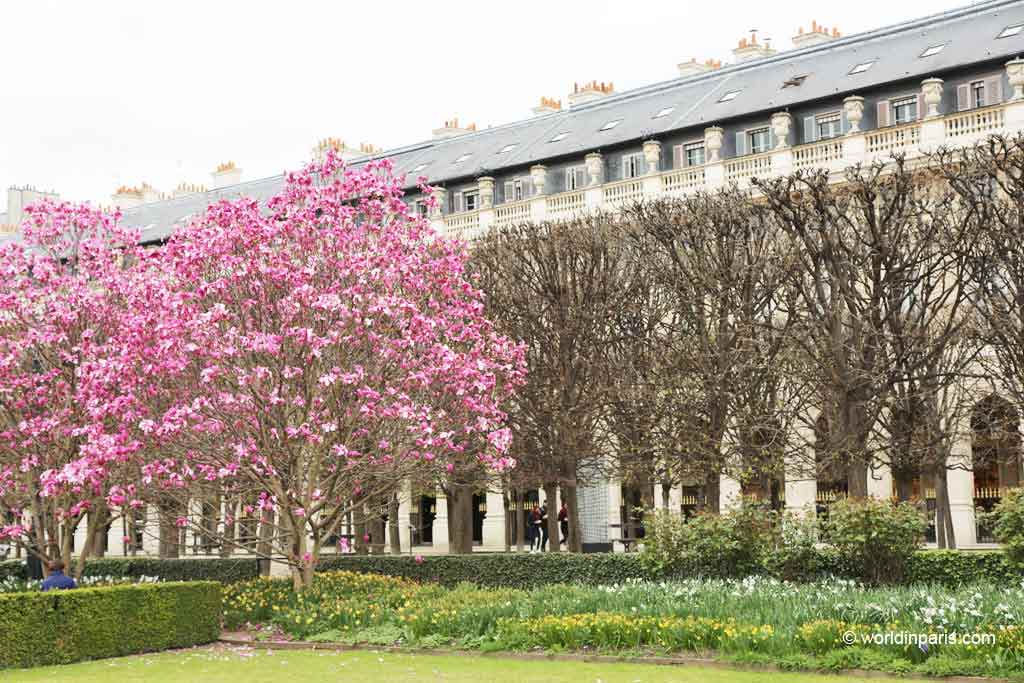
The Palais Royal is one of the most important French Revolution historical sites. The palace was one of the residences of the Royal Family until the Palace of Versailles was built. King Louis XIV spent part of his childhood here.
In 1789, the Palace’s arcades were a popular hangout for radicals. On 12 July 1789, Camille Desmoulins, riled by the sacking of Chief Minister Jacques Necker, gave a speech on a table outside the Café Foy (57-60 Galerie Montpensier) calling the people to uprise. This led to the storming of the Bastille two days later.
Today, Palais Royal is an oasis in the hustle and bustle of Paris, a part of the city that really transports you to a different place and time. The courtyard remains almost exactly as it was in 1789, and the garden is a great place to relax.
8. Pavillon Flore – Louvre Palace
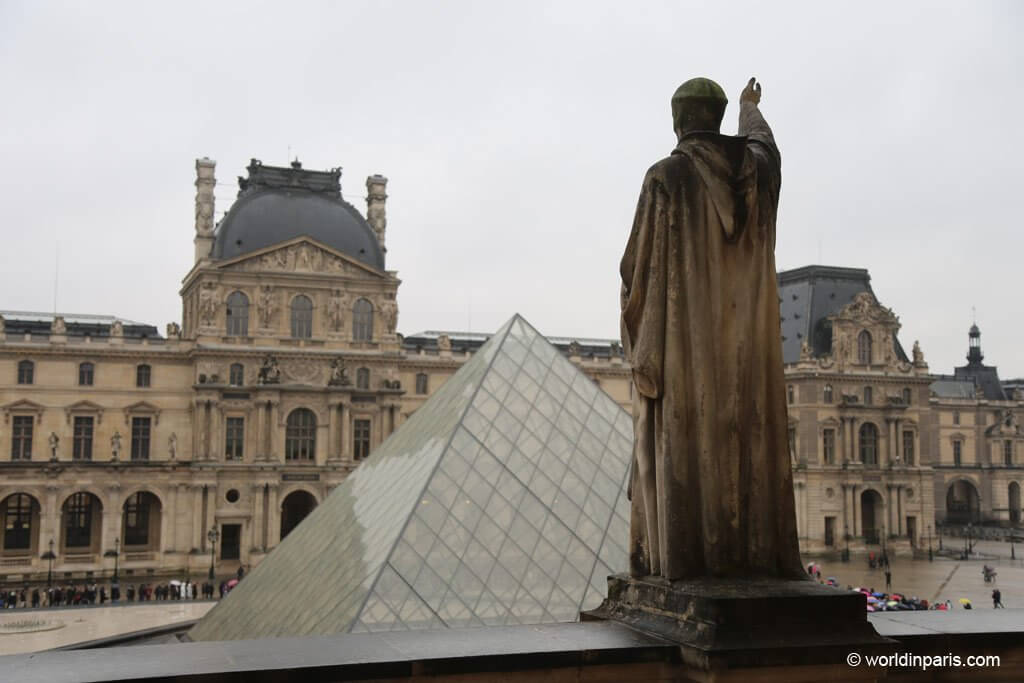
Louvre’s Pavillon de Flore was built to extend the Grande Galerie – which formed the south face of the Louvre Palace – to the Tuileries Palace (today disappeared). During the French Revolution, the Pavillon de Flore was renamed “Pavillon de l’Égalité” and became the meeting point for several Committees of the period.
The most infamous was the Committee of Public Safety, run by the Jacobins under Robespierre. The group of twelve formed France’s de facto executive branch during the Reign of Terror and centralized denunciations, trials, and executions. The Committee of Public Safety was responsible for the deaths of thousands of people, mostly by guillotine.
The Louvre Museum officially opened on 10 August 1793, to mark the first anniversary of the royal couple’s arrest and the abolition of the monarchy a month later. If you have time to visit the Louvre, don’t miss the museum’s collection of 18th-century paintings, sculptures, and furniture.
Louvre Museum Opening Hours: Wednesday to Monday, from 9 a.m. to 6 p.m. Wednesdays and Fridays, the Louvre opens until 9:45 p.m. – Click here to buy your tickets to the Louvre
9. Place de la Concorde
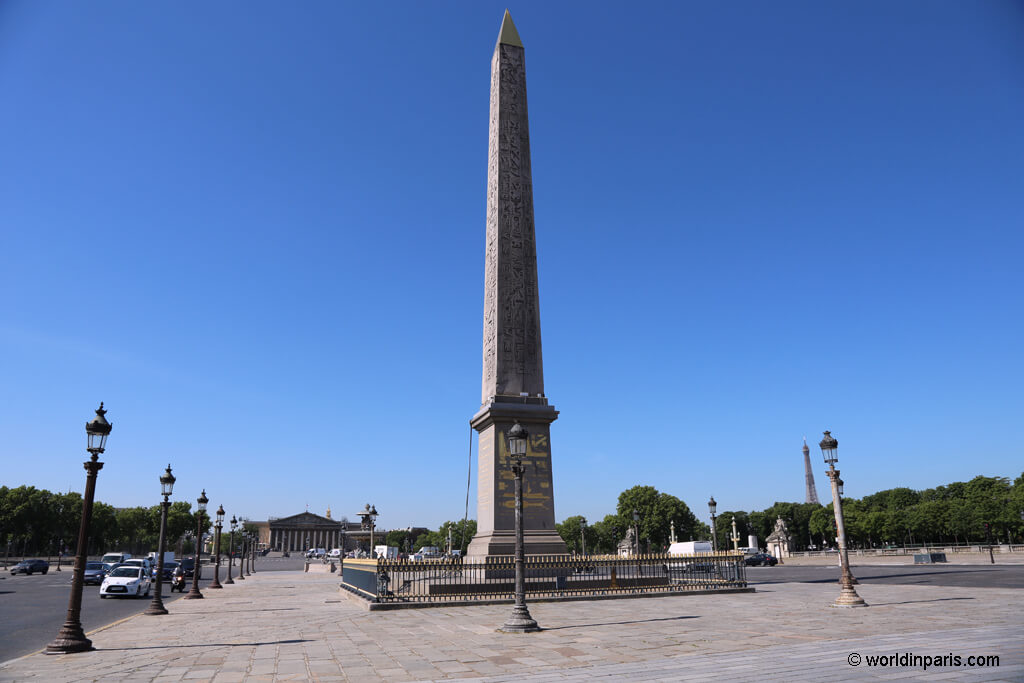
The Place de la Concorde is one of the royal squares in Paris, built in 1748 to celebrate King Louis XV’s recovery from illness. At that time, the equestrian statue of the King dominated the vast square.
During the French Revolution, the statue was torn down, and the new revolutionary government installed the guillotine.
The guillotine’s first guest was Louis Capet (former King Louis XVI), who was no other than King Louis XV’s grandson. Among other notable heads who shared the King’s fate at Place de la Concorde were Queen Marie-Antoinette, Danton, Robespierre, and poor Camille Desmoulins, who helped to start the show.
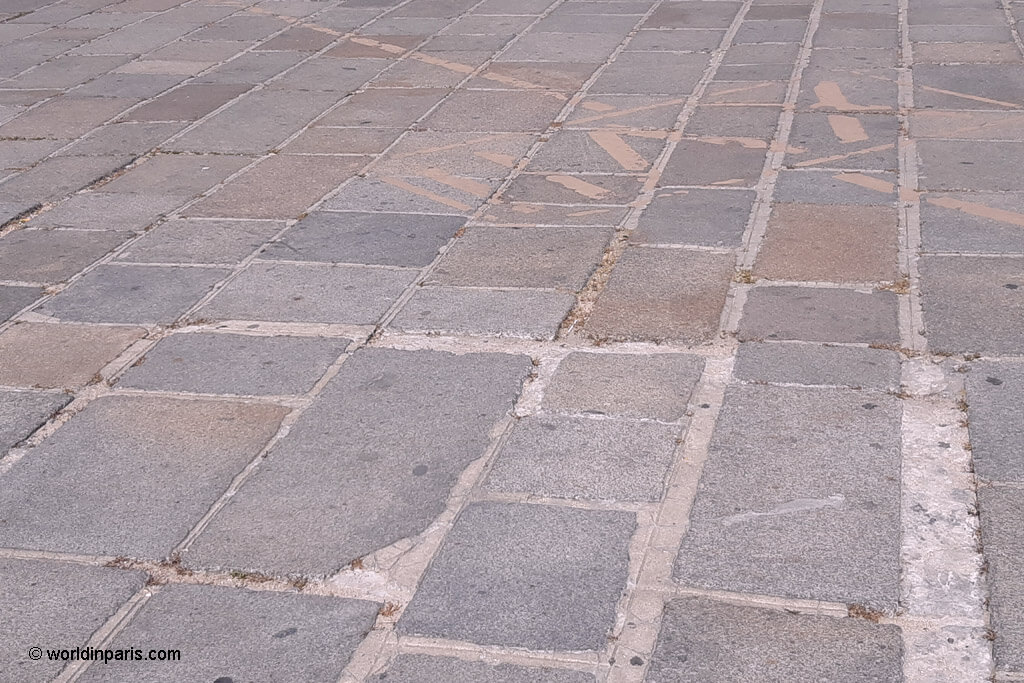
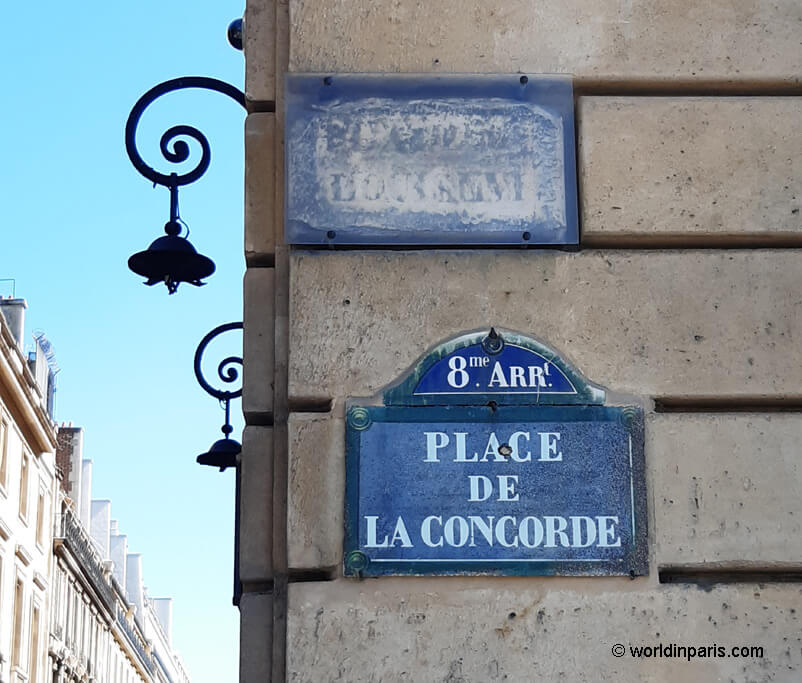
Curious wanderers may notice that some stones on the pavement between the entrance of the Tuileries Gardens and the Egyptian Obelisk have a different size. These are the last marks of the guillotine, and we can also see the marks of the loosening.
Since its inauguration, Place de la Concorde has had different names. At the corner of rue Boissy d’Anglais and Avenue Gabriel, you can see a street plaque with one of the old names, Place Louis XVI, during the Restoration Period (1826).
10. Pont de la Concorde
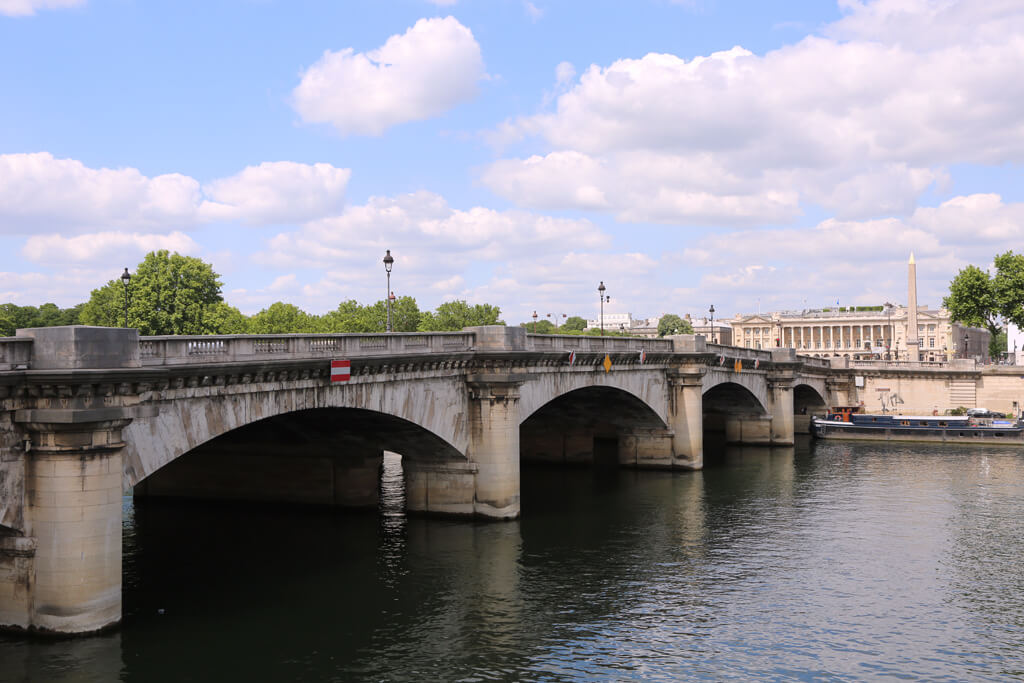
This French Revolution Tour in Paris continues by crossing the Pont de la Concorde to the Seine’s Left Bank.
Built between 1787 and 1791, Pont de la Concorde was finished with stones from the Bastille Prison so that “the people could forever trample the ruins of the old fortress.“
The bridge was formerly known as Pont Louis XVI, Pont de la Révolution, Pont de la Concorde, and Pont Louis XVI again during the Bourbon Restoration (1814). In 1830, the name was changed again to Pont de la Concorde.
11. Hôtel des Invalides
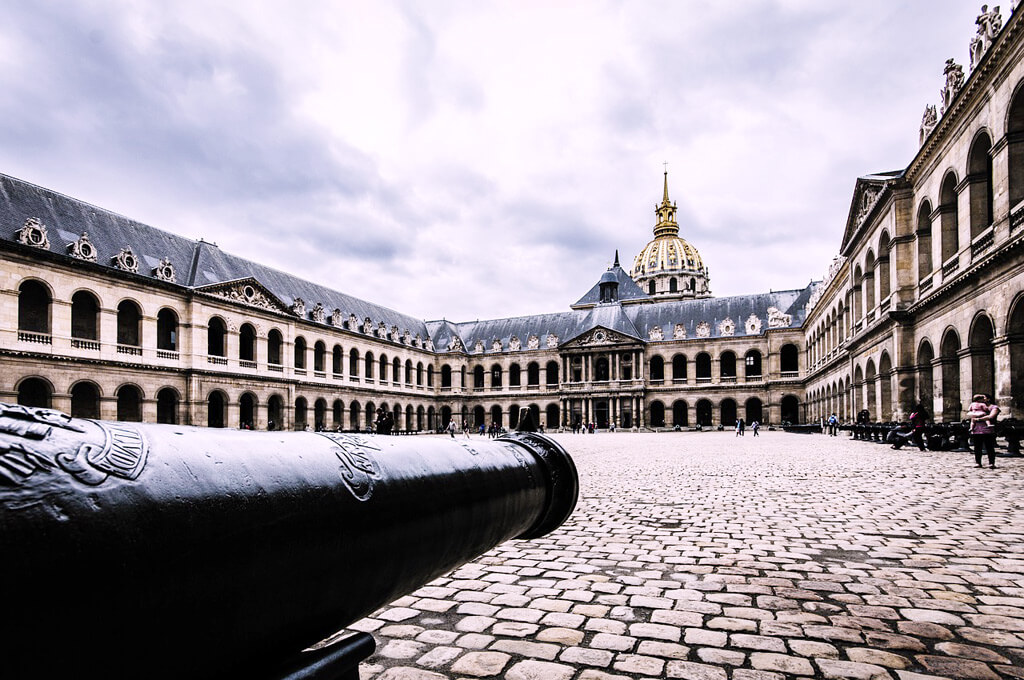
Hôtel des Invalides was built between 1670-1679 by King Louis XIV as a hospital and retirement home for the aged and sick war veterans.
On the morning of 14 July 1789, with the city in a state of panic, several thousand men plundered the military complex’s store of 30,000 muskets. That was the source of weapons for the mob that attacked the Bastille Prison that same day.
Today Les Invalides – Musée de l’Armée is one of the most famous buildings in Paris. From Napoléon’s campaigns to the World Wars, it is all there for you to see. These exhibits cover the military aspects of the wars and their social, economic, and political aspects. Finally, visitors can admire one of the Tombs of Napoléon under the golden cupola.
Les Invalides Opening Hours: daily from 10:00 a.m. to 6:00 p.m. (9:00 p.m. on Tuesdays) – Click here to buy your tickets to Les Invalides
12. Cour du Commerce Saint-André
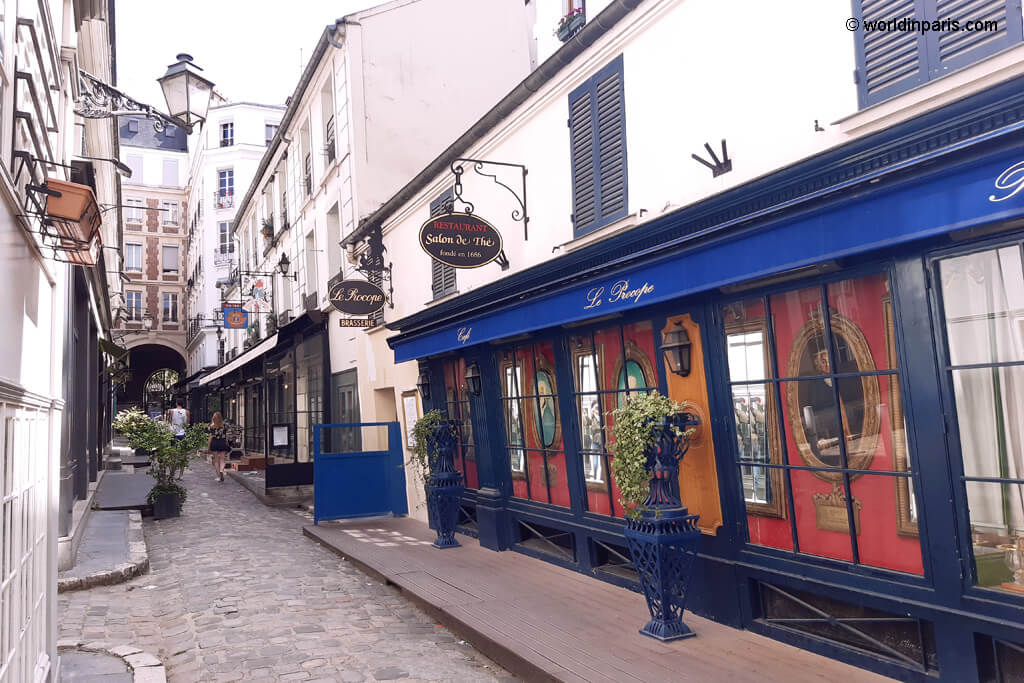
Cour du Commerce-Saint-André is a charming walkway in the heart of the Odéon neighborhood (Paris 6) with a fascinating history. Cour du Commerce-Saint-André was one of the main melting pots of the French Revolution in Paris. The French Revolution sites in this passage are:
- Le Procope, the oldest café in Paris, founded in 1684.
- At number 8, Marat established the editorial office and the printing works of L’Ami du Peuple, a French political journey.
- At number 9, Joseph Joseph Ignace Guillotin was testing his guillotine on sheep.
- Number 20 was Danton’s house. He was arrested there on 30 March 1794, six days before being beheaded. This building disappeared during the extension of Boulevard Saint-Germain.
13. Café Le Procope
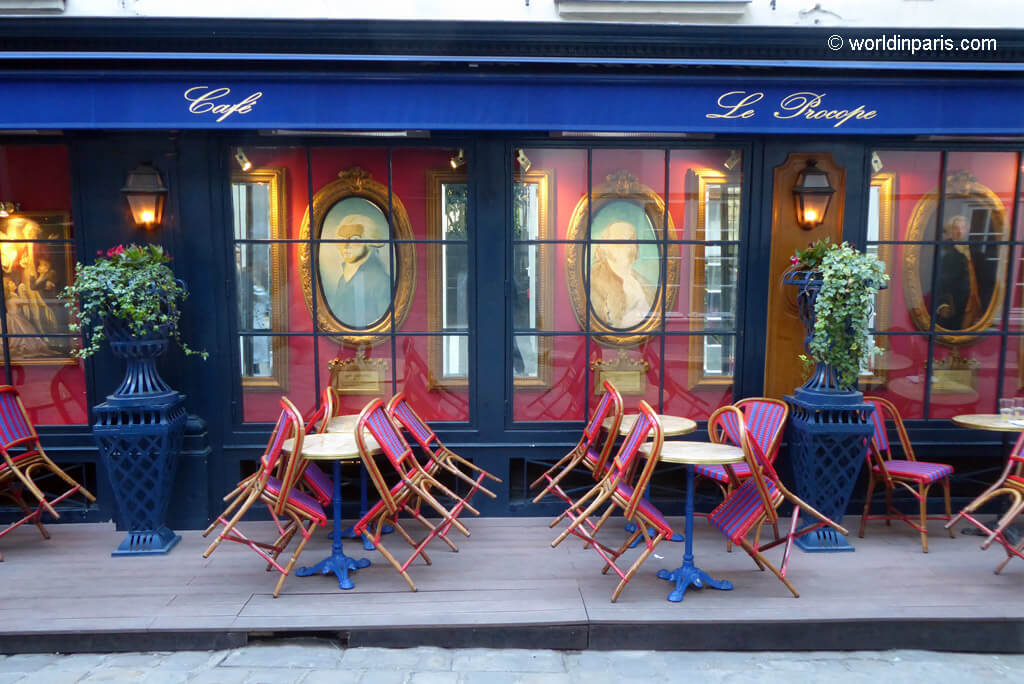
Located in Cour du Commerce Saint-André, Café Le Procope is the oldest café in Paris, dating back to 1670. This café was years later the meeting place for the revolutionaries Danton, Marat, Camille Desmoulins, Fabre d’Eglantine, and Legendre. The watchword for the Tuileries Attacks of 20 June and 10 August 1792 was given from this café.
Today, Café Le Procope is a restaurant serving traditional French cuisine. Inside, the Declaration of the Rights of Man and the Citizen of 1789 is reproduced on the walls of one of the rooms. The bathroom doors bear the words “Citoyens” and “Citoyennes,” respectively for men and women, and many documents evoking the Revolution are present on the walls. Guests can also see a hat belonging to Napoléon that is displayed at the entrance.
15. The Luxembourg Gardens
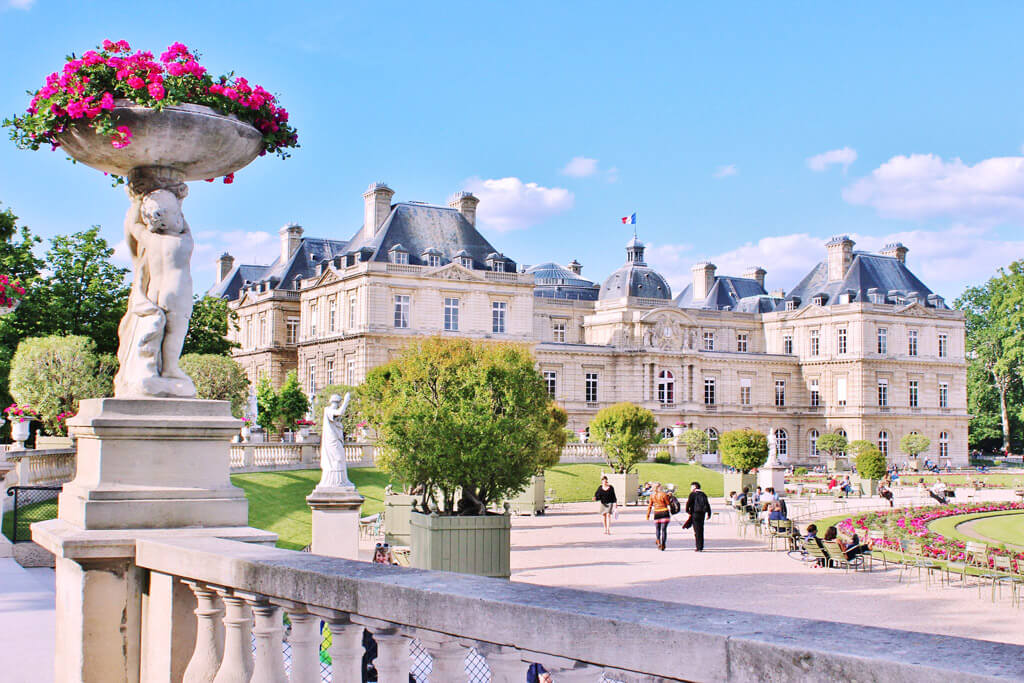
On the way to the Luxembourg Gardens, you can pass by Rue de l’École de Médecine. Marat lived on the 20 of this street (point #14 on the Google map above), and it was here, in his bathtub, where Charlotte Corday assassinated him.
Jardin du Luxembourg is home to the Luxembourg Palace, the headquarters of the French Senate. During the Revolution, the Luxembourg Palace was transformed into a prison. Major figures of the Revolution were detained here, like Danton and Camille Desmoulins.
The Luxembourg Gardens are the perfect place for a break during this French Revolution walking tour to enjoy a picnic lunch before discovering the final weeks of the Reign of Terror.
16. The Panthéon
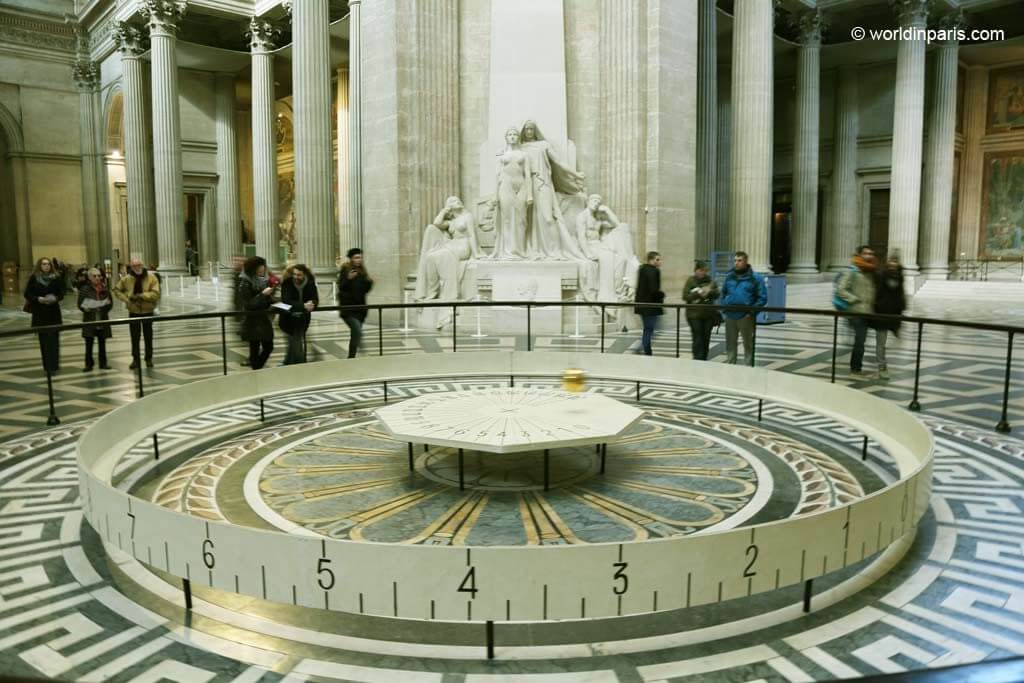
Outside the Luxembourg Gardens, on Rue de Médicis, you will take the RER train to the next stop. But before leaving, perhaps you wish to have a look at the Panthéon?
The Panthéon of Paris was originally built to be a church. The Panthéon was finished shortly before the French Revolution, and in 1791, the revolutionary government turned it into the “mausoleum for the great men of the Nation.”
Some of the important French figures buried here are Voltaire, Rousseau, Alexandre Dumas, Emile Zola, Victor Hugo, Jean Moulin, and Marie Skłodowska-Curie.
After his assassination, Marat’s body was buried (for the first time) under a weeping willow in the garden of the Couvent of Cordeliers, with the entire National Convention in attendance and the Marquis de Sade delivering the eulogy.
On 25 November, his remains were transferred to the Panthéon, where he was buried for the second time as a “martyr of Liberty” and a “great citizen of the Republic.”
Only a few months later, the government decided that, in the end, Marat was not a good citizen and his body was “dépanthéonised” and buried for a third and final time in the cemetery of the church of Saint-Étienne-du-Mont next door. Poor Marat!
Panthéon Opening Hours: every day from 10 a.m. to 6.30 p.m. – Click here to buy your tickets
17. Picpus Cemetery
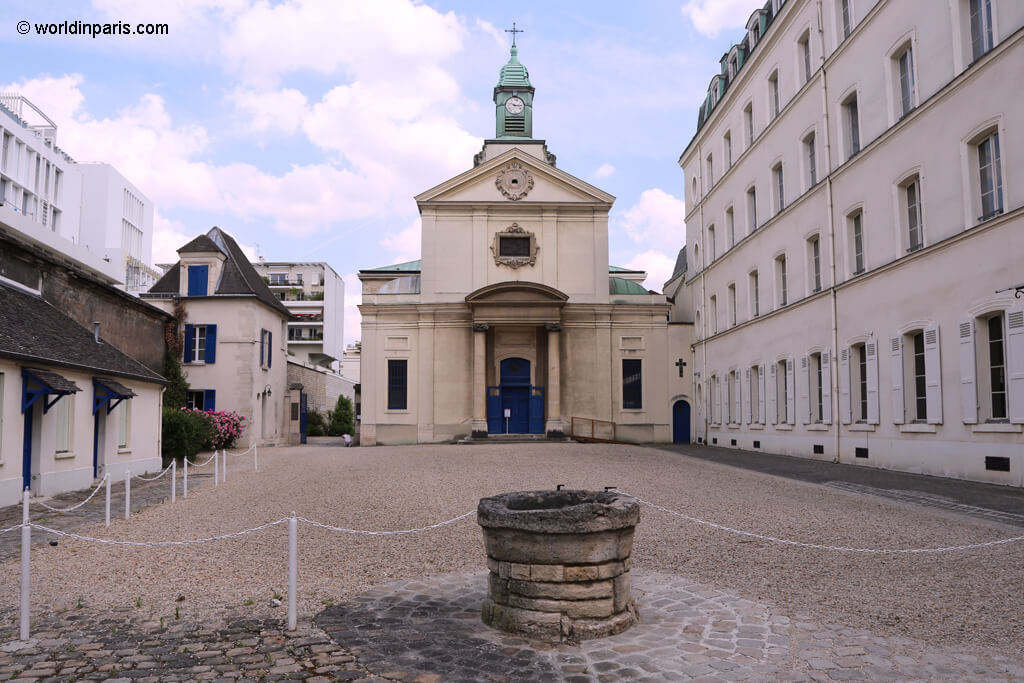
Take the RER train from Luxembourg RER station (just outside the Luxembourg Gardens) to Nation station, and walk the short distance to the Picpus Cemetery.
This tranquil place is the final resting place of 1,306 headless bodies who lost their lives at the guillotine set up in the former Place du Trône-Renversé (now Place de la Nation). They were nearly all condemned for petty, absurd, or imaginary crimes.
The massacre only stopped on 27 July 1794, when Robespierre was condemned and guillotined by his partisans, scared of becoming the next victims.
This cemetery is also the final resting place of Général Lafayette, known as the “hero of two worlds,” referring to his involvement in the revolutionary wars of both America and France. I also recommend visiting this place in my post about American History in Paris.
The Picpus Cemetery is the final stop on this French Revolution walking tour, Paris. Take the train back to central Paris for a well-deserved apéritif.
Picpus Cemetery Opening Hours: Monday to Saturday, from 2 p.m. to 5 p.m.
Other French Revolution Sites in Paris
The following places are also key French Revolution sites in Paris, but I could not fit them in this French Revolution Walking Tour due to their location. If you have some extra time, they are definitely worth a detour!
18. Square du Temple (Tour du Temple)
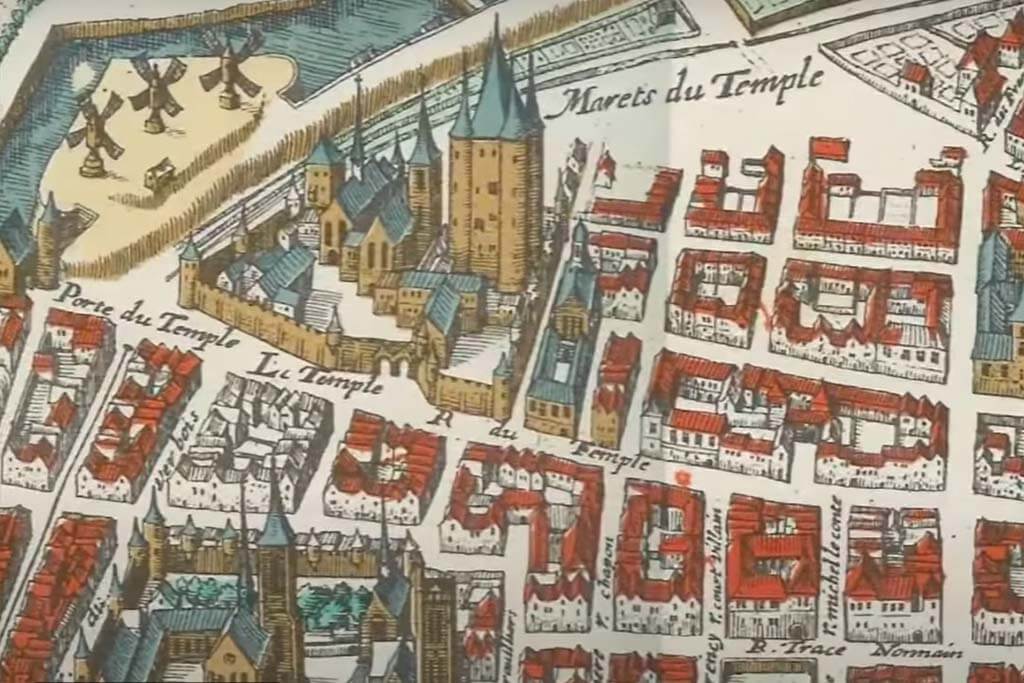
The Square du Temple, in Le Marais, occupies the site of the Temple enclosure built by the Knight Templars in the 13th century. Inside this enclosure, the impressive Tour du Temple dominated the skyline of medieval Paris. Fifty meters high and with 2-meter wide walls, this massive tower had four levels and a granary under the roof.
The Tour du Temple was the last home of the royal family. King Louis XVI occupied the second floor in relative comfort, while Queen Marie-Antoinette and the kids occupied the third floor. On 21 July 1793, Louis Capet (former King Louis XVI) made his last journey from the Tour du Temple to Place de la Révolution (Place de la Concorde), where he lost his life under the guillotine. In August, the “Capet widow” was transferred to the Conciergerie for her trial. The Dauphin, Louis XVII, remained in the tower, where he died of tuberculosis three years later at age 10.
By 1808, the Tour du Temple had become a place of pilgrimage for royalists, so Napoléon ordered its demolition, which took two years. Today, the north corner of the Mairie of the 3rd Arrondissement occupies the site of the tower. On Rue Eugène Spuller, just in front of the Mairie, some plates on the pavement retrace the Tour du Temple’s layout.
19. The Chapelle Expiatoire
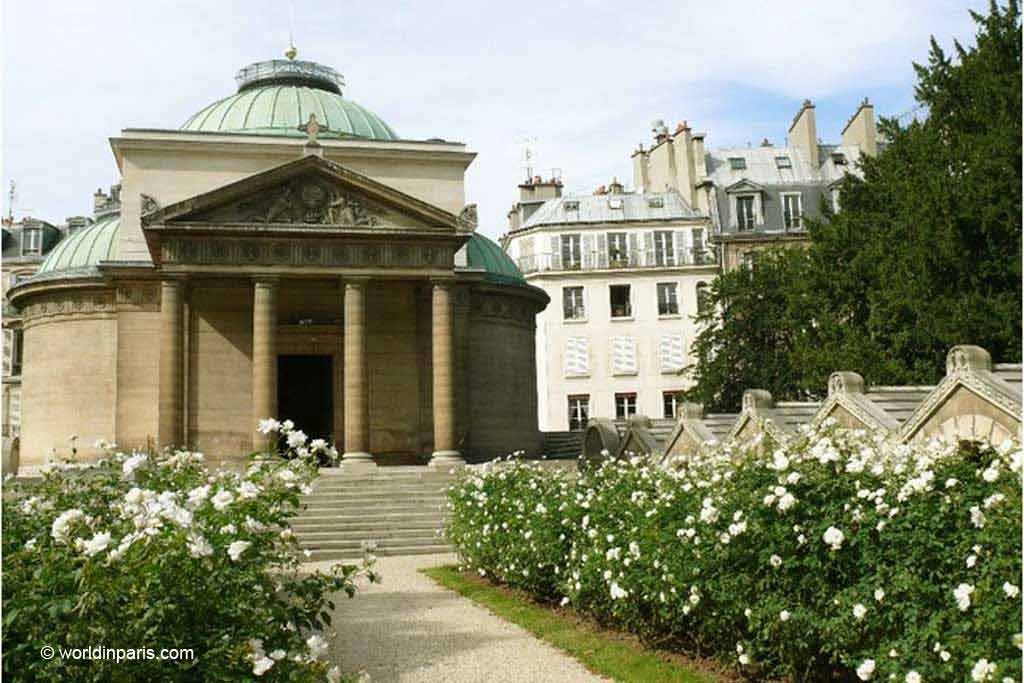
The Chapelle Expiatoire is a neoclassic-style building built on the location of the Cimitière de la Madeleine, which received hundreds of corpses during the revolutionary days.
The Chapel is a memorial erected at the exact point where King Louis XVI and Marie-Antoinette were buried after their execution in 1793. Under the Restauration, the two corpses were transferred to the Basilica of Saint-Denis to rest with the other French Kings.
This tranquil place on the Grands Boulevards (Paris 8) is perfect for escaping the hustle and bustle of Paris. Designed by the architect Fontaine (1816-1826), the Chapelle Expiatoire’s primary purpose was to ask for the pardon on behalf of France.
Chapelle Expiatoire Opening Hours: Monday to Saturday, from 10 a.m. to 12:30 p.m. and from 1:30 p.m. to 5 p.m.
20. Musée de Carnavalet – Histoire de Paris
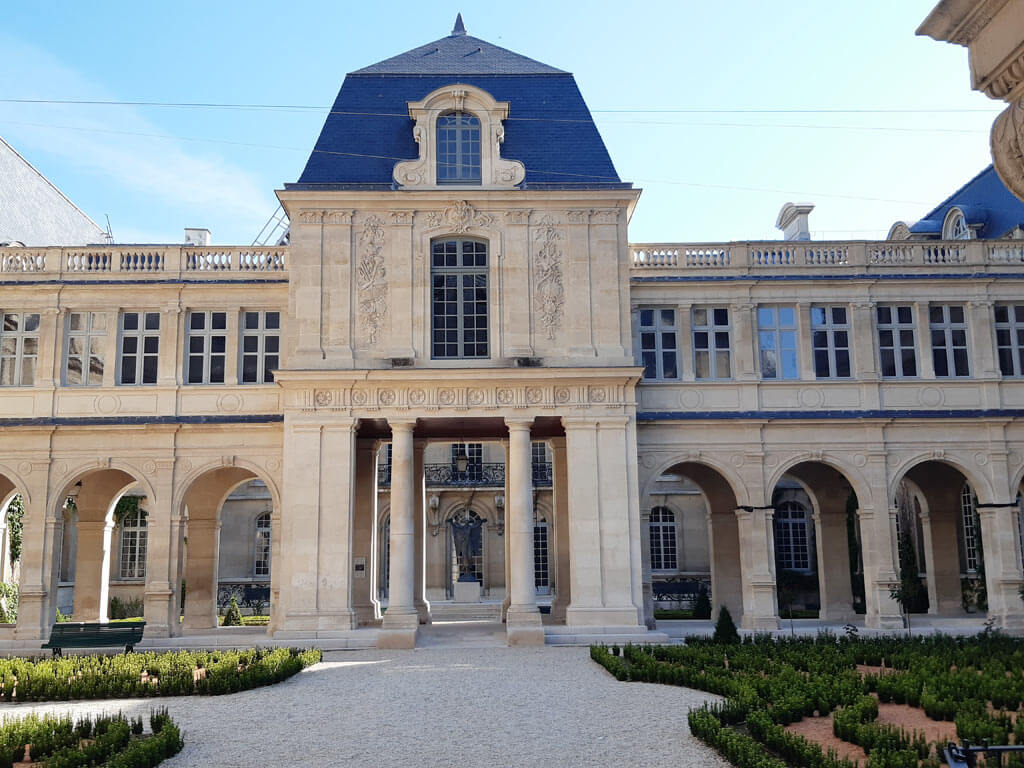
This beautiful museum in Le Marais is dedicated to the History of Paris from Prehistory to the present day.
Musée Carnavalet is also known as the “Museum of the French Revolution” because of its important section dedicated to this historical period. Amongst other things, you can see models of the Bastille prison, a reproduction of Marie-Antoinette’s room in the Tour du Temple, and many of her objects.
If you want to know more about the French Revolution in Paris after the walking tour, the Musée de Carnavalet is the place to go.
Musée Carnavalet Opening Hours: Tuesday to Sunday, from 10 a.m. to 6 p.m. Entrance is free.

